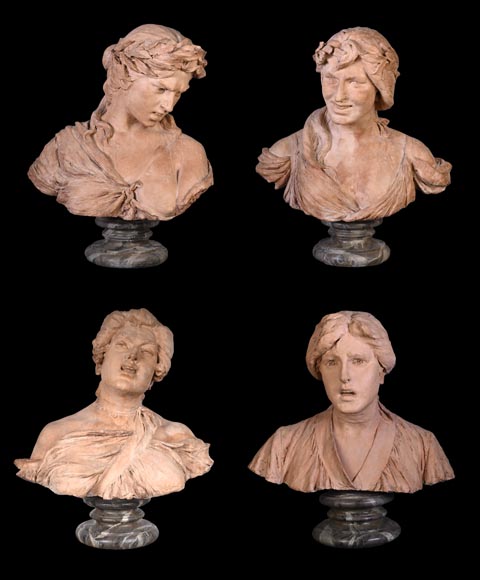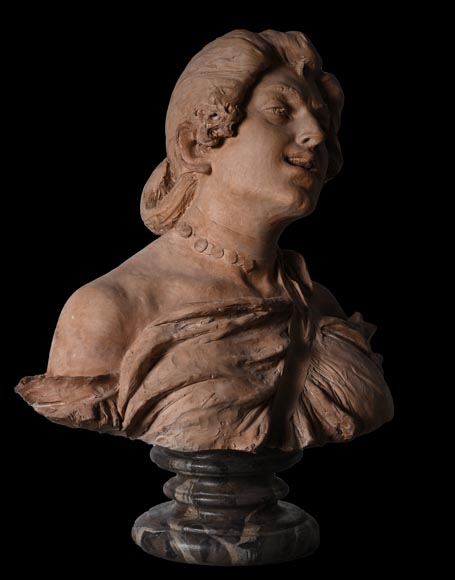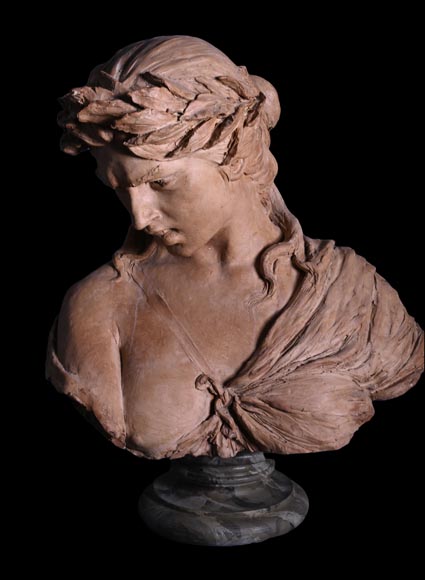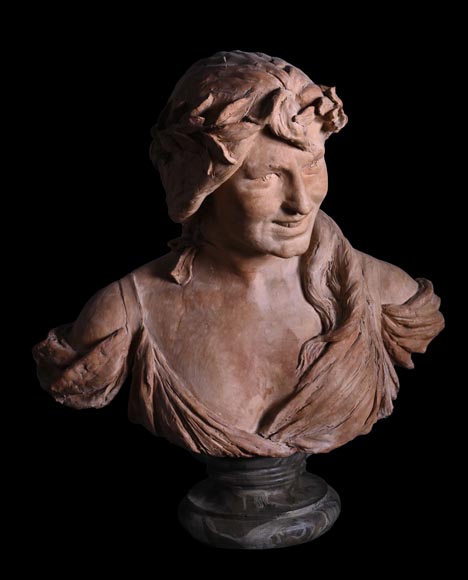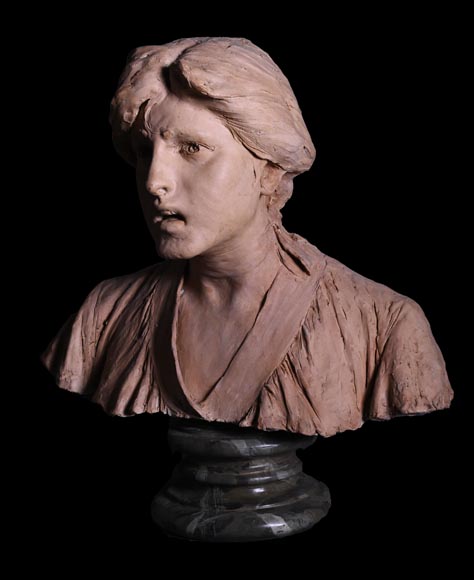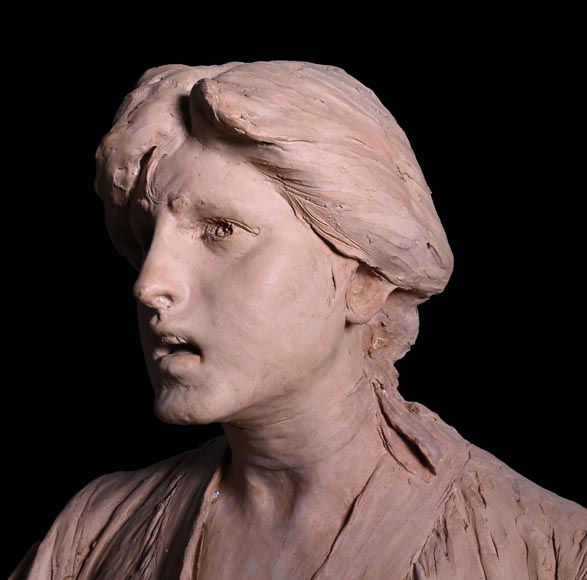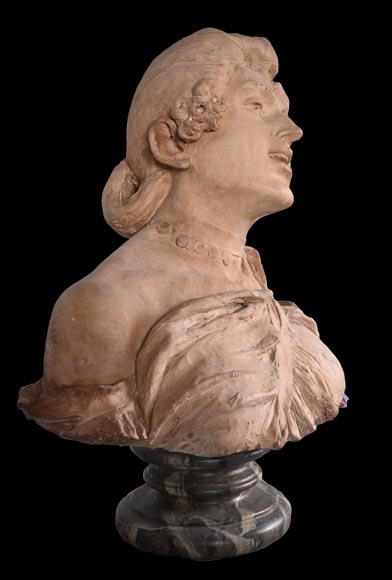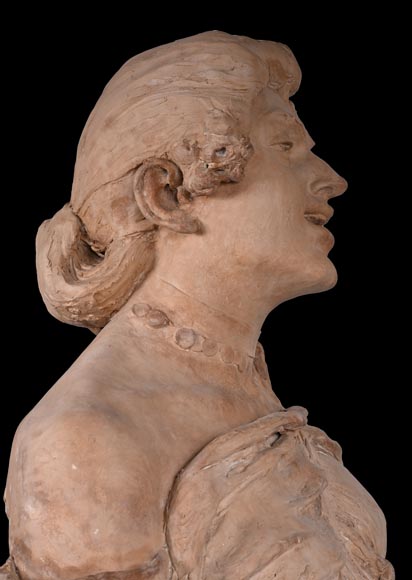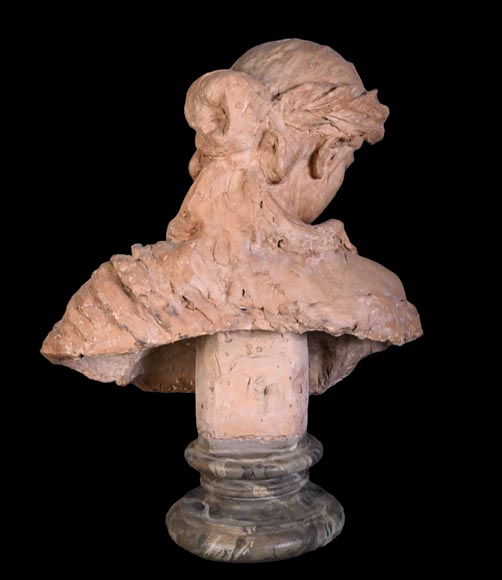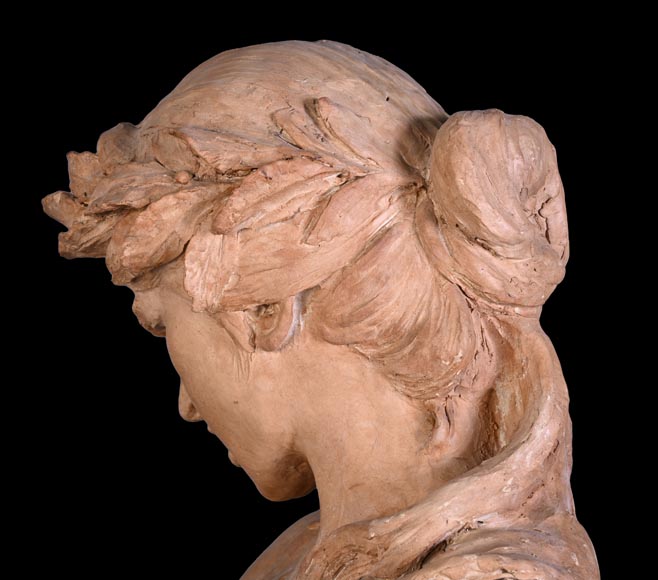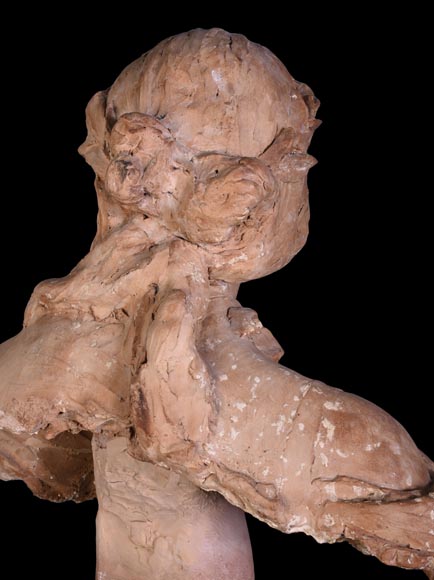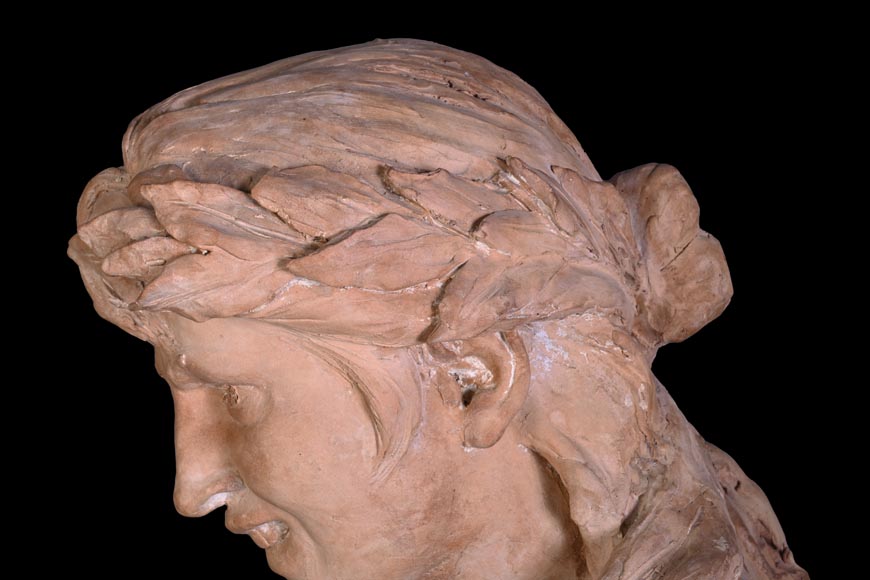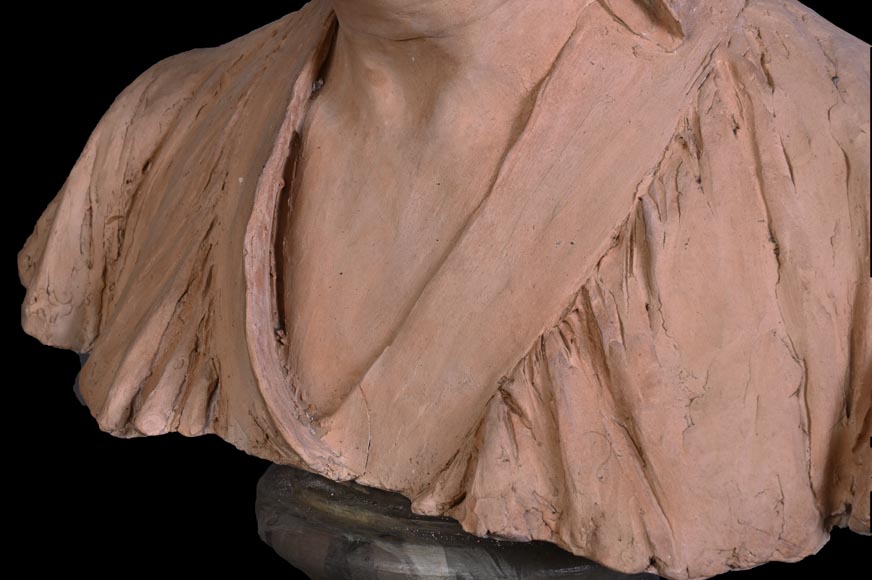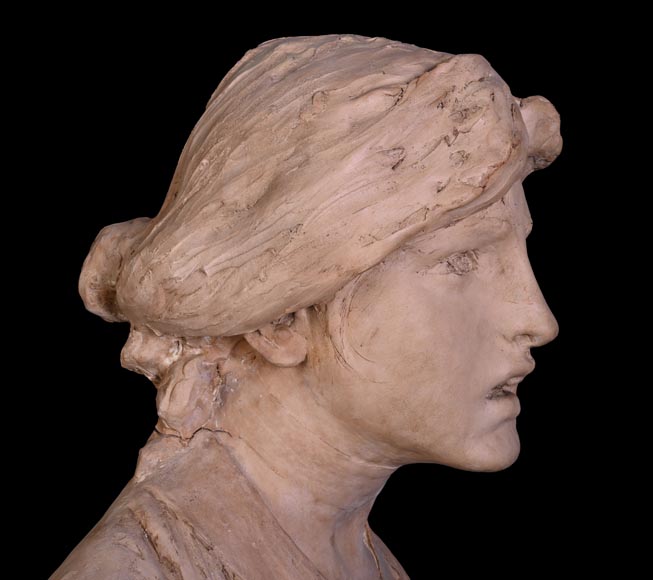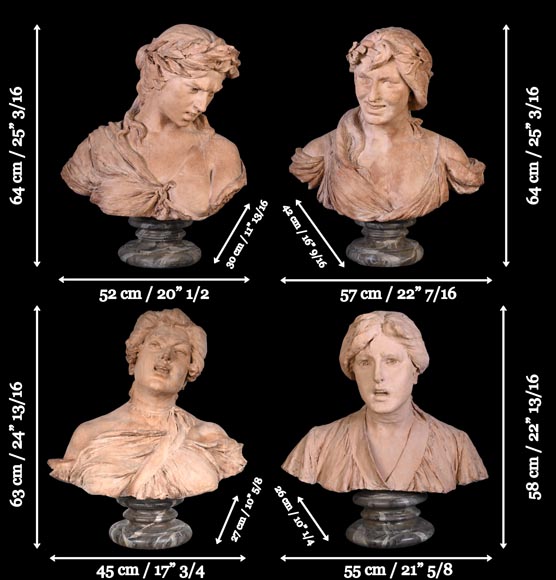Style Other / Ref.15439
Four "Expression" Busts in Terracotta, 19th Century
Dimensions
Width 22'' ½ 57cm
Height 25'' ¼ 64cm
Depth: 16'' ½ 42cm
Origin:
19th century
Status:
Good condition
H. 64 cm/25.2’’; W. 52 cm/20.47’’; D. 30 cm /11.81’’
H. 64 cm/25.2’’; W. 57 cm/22.44’’; D. 42 cm/16.54’’
H. 63 cm/24.8’’; W. 45 cm/17.72’’; D. 27 cm/10.63’’
H. 58 cm/22.83’’; W. 55 cm/21.65’’; D. 26 cm/10.24’’
These four expression busts in terracotta, crafted by an anonymous hand, date from the 19th century.
The practice of creating expressive heads, tied to the development of psychology from the 18th century onwards, found a particular resonance in sculpture. These four female busts are a testament to this: the extreme expressiveness of the faces pursues a quest for absolute truth. One of the female figures, with her head lowered, furrows her brow and curls her lips, revealing her teeth in a sign of disgust; another, smiling, appears more engaging; a third, with a rather disdainful expression, seems about to speak, while a fourth looks surprised and somewhat fearful. The expressiveness of the faces is accompanied by a varied treatment of the hair and adornments. The busts end below the chest, which is sometimes partially exposed, adding a certain sensuality to the models.
Terracotta is a particularly malleable medium before firing, often used for sketches or first drafts of a work. These busts seem to have been intended for molding and therefore belong to this category. Regardless, the sculptor’s hand left a true mark on them. The artist also chose to highlight them by painting a marble-like design on the pedestals, turning each bust into a stand-alone work of art.
The extreme emotions depicted in these busts, particularly the smiling woman, recall Jean-Baptiste Carpeaux’s Bacchante with Roses (1873, terracotta, Toulouse, Musée des Augustins). The model for this work is known; it was Mademoiselle Miette, an actress at the Palais-Royal. She is shown in a state of ecstasy: her head is thrown back, a broad smile on her lips, her rich hair flowing over her shoulders and intertwined with roses, which again contributes to the expressiveness of the whole, as does her uncovered and sensual chest. This bust also confirms that terracotta is particularly suited to conveying emotions and providing precision in modeling for the sculptor.
Informations
Price: on request
Recommended for you :
Dimensions:
Width: 30
Height: 28
Depth: 12
Dimensions:
Width: 15
Height: 14
Depth: 7
Dimensions:
Width: 47
Height: 23
Depth: 26
Dimensions:
Width: 35
Height: 111
Depth: 43
Dimensions:
Width: 28
Height: 63
Depth: 24
Dimensions:
Width: 36
Height: 68
Depth: 26
Dimensions:
Width: 10
Height: 23
Depth: 8
Dimensions:
Width: 36
Height: 54
Depth: 23
Dimensions:
Width: 25
Height: 43
Depth: 23
Dimensions:
Width: 23
Height: 45
Depth: 17
Dimensions:
Width: 27
Height: 49
Depth: 28
Dimensions:
Width: 43
Height: 100
Depth: 33



